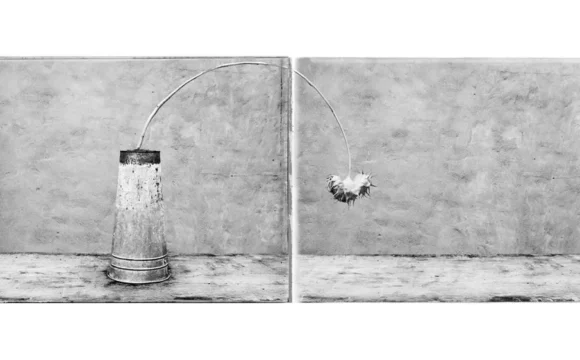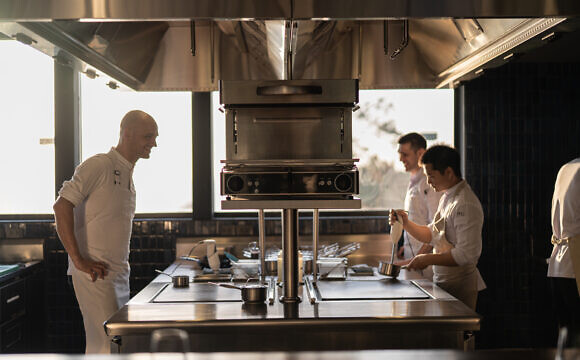แม้เครื่องบินที่มีปีกกางแบบนกจะฟังดูเหมือนหลุดมาจากอนิเมะ แต่บริษัทผู้ผลิตเครื่องบินยักษ์ใหญ่ของโลกทั้งสองฟากฝั่งมหาสมุทรแอตแลนติก กำลังเร่งพัฒนาต้นแบบเครื่องบินที่จะปฏิวัติวงการการบินในอนาคต เป้าหมายของพวกเขาคือ การสร้างเครื่องบินที่ประหยัดพลังงานมากกว่าเดิมอย่างก้าวกระโดด เพื่อบรรลุเป้าหมายของอุตสาหกรรมการบิน ที่มุ่งสู่การปล่อยก๊าซคาร์บอนเป็นศูนย์ภายในปี 2050 ในฝั่งของยุโรป แอร์บัส กำลังออกแบบโครงสร้างปีกแบบแปลกใหม่ รวมถึงปีกที่สามารถปรับรูปทรงเพื่อรับมือกับอากาศแปรปรวน
โครงการ Extra Performance Wing ที่กำลังพัฒนาอยู่นั้น “เลียนแบบขนนก และปรับเปลี่ยนรูปทรงอัตโนมัติเพื่อเพิ่มประสิทธิภาพทางอากาศยศาสตร์” Sebastien Blanc ผู้อำนวยการฝ่ายเทคนิคโครงการปีก ซึ่งเป็นส่วนหนึ่งของโปรแกรม Airbus UpNext กล่าว ปีกที่สามารถปรับรูปทรงนี้มีความยาว 165 ฟุต จะมีการทดสอบการบินบนเครื่องบินเจ็ต Cessna Citation VII ในปีหน้า “ช่นเดียวกับนก ปีกชนิดนี้สามารถปรับตัวเข้ากับสภาพแวดล้อมได้อย่างชาญฉลาด โดยใช้เทคโนโลยีควบคุมอัจฉริยะ” Blanc อธิบาย นอกจากนี้ ปลายปีกที่สามารถพับเก็บได้ ยังช่วยเพิ่มประสิทธิภาพ ขณะเดียวกันก็สามารถเข้ากับประตูขึ้นเครื่องที่สนามบินได้พอดี
ปีกที่บางและยาว ยังเป็นส่วนสำคัญของ X-66A ซึ่งเป็นแนวคิดของโบอิ้งที่นาซาอนุมัติเมื่อปีที่แล้ว ในฐานะส่วนหนึ่งของโปรแกรม Sustainable Flight Demonstrator โบอิ้งจะปรับเปลี่ยนเครื่องบิน MD-90 โดยการย่นลำตัวเครื่อง และติดตั้งเครื่องยนต์ใต้ปีกที่เรียกว่า Transonic Truss-Braced Wing ซึ่งอาศัยชุดโครงสร้างตามหลักอากาศพลศาสตร์
“เป้าหมายของเราคือการพัฒนาเครื่องบินที่ยั่งยืนยิ่งขึ้น ซึ่งสามารถแทนที่เครื่องบินทางเดินเดียวในปัจจุบัน” Brent Cobleigh ผู้จัดการโครงการ X-66A ของนาซา กล่าว โดยเสริมว่า เครื่องบินทางเดินเดียวเป็นสาเหตุของเกือบครึ่งหนึ่งของการปล่อยไอเสียจากการบินทั่วโลก “ด้วยระบบขับเคลื่อนที่ล้ำหน้าและวัสดุที่เบากว่า เราเชื่อว่าจะช่วยลดการเผาไหม้เชื้อเพลิงลง 30 เปอร์เซ็นต์”
แม้เป้าหมายของอุตสาหกรรมการบินในการปล่อยก๊าซคาร์บอนเป็นศูนย์ภายใน 26 ปีข้างหน้านี้ จะต้องเผชิญกับอุปสรรคด้านต้นทุนที่สูง แต่ด้วยแนวคิดสุดล้ำเหล่านี้ที่บริษัทผู้ผลิตเครื่องบินชั้นนำของโลกกำลังสำรวจอยู่นั้น อาจเป็นแรงผลักดันให้บริษัทอื่นๆ หันมาพัฒนาเครื่องบินแห่งอนาคตที่เป็นมิตรต่อสิ่งแวดล้อมมากขึ้น
บทความโดย Michael Verdon
Planes with flapping wings sound more anime than aerospace, but the world’s largest airframers on both sides of the Atlantic are expediting prototypes that could shape the next generation of business and commercial jets in entirely unconventional ways. Their mission? To make aircraft exceedingly more fuel efficient and help deliver on aviation’s sustainability pledge to be carbon-neutral by 2050. In Europe, Airbus is designing radical wing configurations, including one that changes form to counter turbulence, while stateside, Boeing has partnered on NASA’s X-66A experimental plane that relies on trusses to support unusually long and slender wings.
The Extra Performance Wing that Airbus is developing “mimics a bird’s feathers and adjusts automatically to maximize aerodynamic flow," says Sebastien Blanc, technical wing director for the project, part of the Airbus UpNext program. Flight tests for the 165-foot-long shape-shifting wing will begin next year on a Cessna Citation VII jet. “Like a bird, it dynamically adapts to conditions, using active control technologies," explains Blanc. And its folding wingtips, an ancillary design, will allow for increased performance while fitting into the constraints of the airport gates.
Thin, elongated wings are also integral to the X-66A, a Boeing concept that NASA greenlighted last year as part of its Sustainable Flight Demonstrator program. Spearheading the $1.15 billion plan across a seven-year timeline, Boeing will modify an MD-90 aircraft by shortening the fuselage and mounting the engines under what it calls a Transonic Truss-Braced Wing, which, as the name implies, relies on a set of aerodynamic trusses.
“Our goal was to develop a more sustainable airplane that can replace current single-aisle aircraft," says Brent Cobleigh, NASA’s X-66A project manager, adding that the latter account for nearly half of global flight emissions. “With advanced propulsion and lighter-weight materials, we think it will have a 30 percent reduction in fuel burn."
The industry’s goal to reach carbon neutrality in the next 26 years faces strong headwinds in cost alone. Yet with such out-of-the-box concepts being explored by some of the world’s biggest aerospace innovators, others may soon be motivated to earn their own sustainability wings.
The article by Michael Verdon








